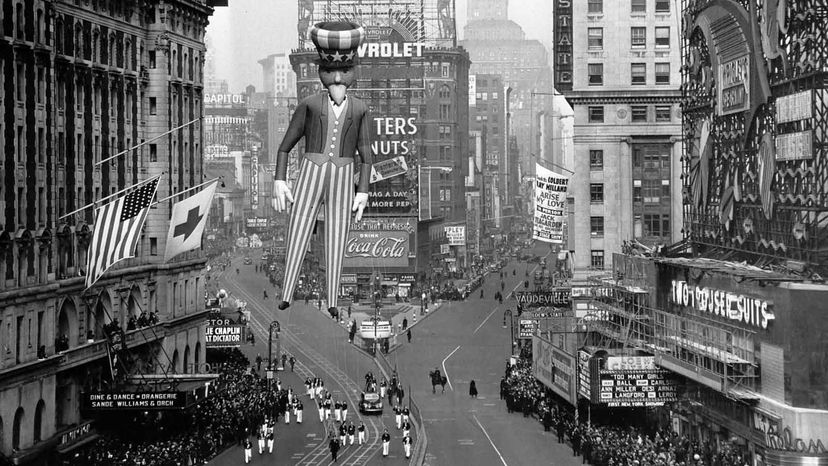History of the Macy's Parade

Macy's staged its first Thanksgiving Day parade in 1924. That year it was called the Macy's Christmas Parade, and it followed a route from 145th Street and Convent Avenue to the Macy's store at 34th Street and Broadway. Three floats (pulled by horses), four bands and zoo animals from the Central Park Zoo — camels, donkeys, elephants and goats — starred in the parade. Santa Claus was last in the lineup, a tradition that continues to this day.
The parade took shape during the Roaring '20s, a time of prosperity and pleasure. It was staged by Macy's employees, many of whom emigrated to America from Europe and longed to stage a celebration similar to the ones in their countries.
Advertisement
In 1927, the gigantic balloons that are now the signature element of the parade made their first appearance with the help of helium. The balloons replaced the zoo animals that were frightening to some children, and the first balloons included cartoon characters like Felix the Cat. At the conclusion of the parade, the giant balloons were released into the air.
In 1928, Macy's began offering a $100 reward for any returned balloons, which were affixed with return address labels [source: McCarthy]. In 1931, pilot Col. Clarence E. Chamberlain snagged a balloon with his airplane's wing, leading to a ban on retrieval by airplanes the following year. But after the 1932 parade, another pilot attempted to capture a balloon and nearly crashed, leading Macy's to discontinue releasing the balloons at the parade's end [source: McCarthy].
In 1934, celebrities became an important element of the parade, with singer-actor Eddie Cantor joining the event that year. The Mickey Mouse helium balloon was also introduced that year.
From 1942 to 1944, the parade was canceled because of the shortage of helium and rubber during World War II. Those three years are the only time the celebration has been called off [source: Macy's]. When the parade returned in 1945, it was broadcast on television for the first time and was bigger than earlier versions. In 2020, the parade wasn't canceled, though few spectators were allowed along the parade route because of the COVID-19 pandemic, and there was no giant balloon Inflation Celebration and no marching bands.
Every year, the Macy's team behind the parade works to outdo the previous year's event. This evolution has meant bigger balloons, more floats, better materials and new technologies, all resulting in the flashy spectacle that rolls through the streets of New York today.
The 2022 parade will feature 16 giant character balloons, 28 floats, 40 novelty and heritage inflatables, more than 700 clowns, 12 marching bands and 10 performance groups, a host of musical stars, and of course, Santa Claus.